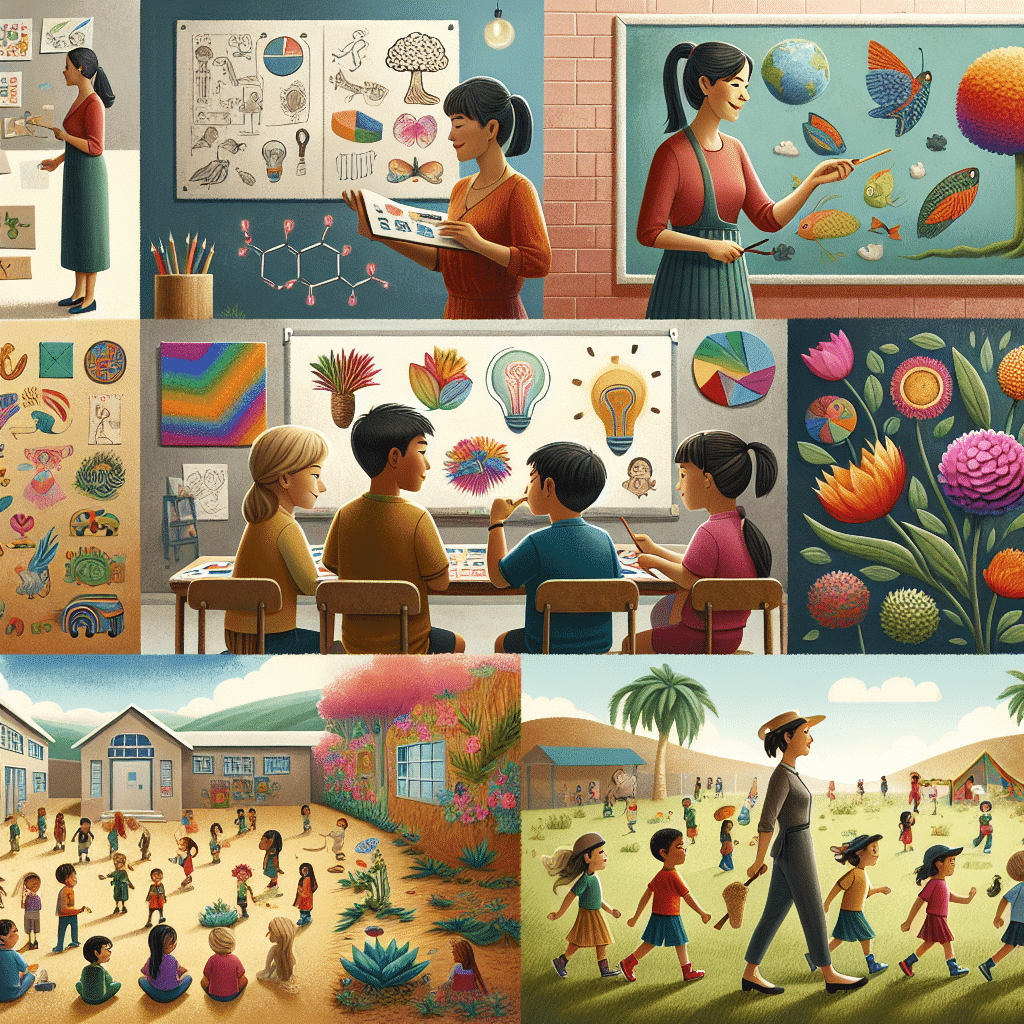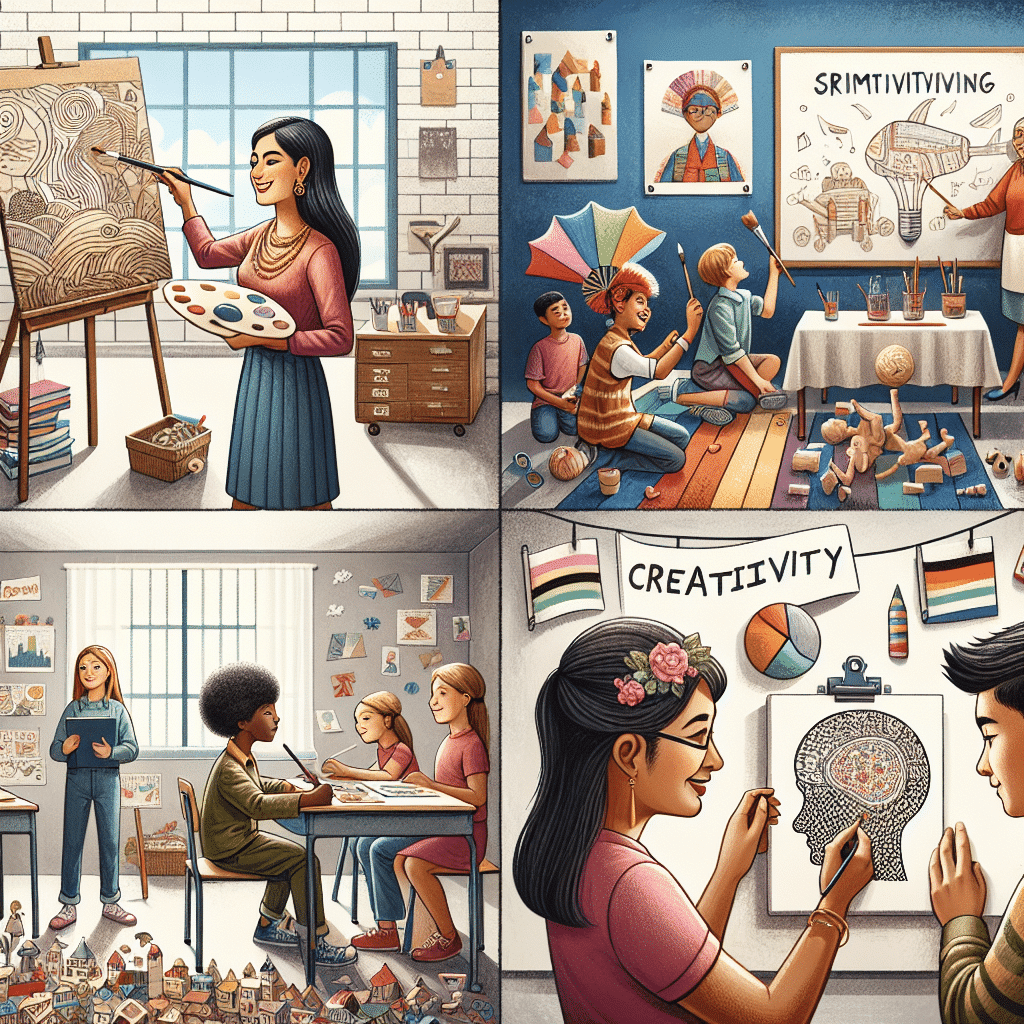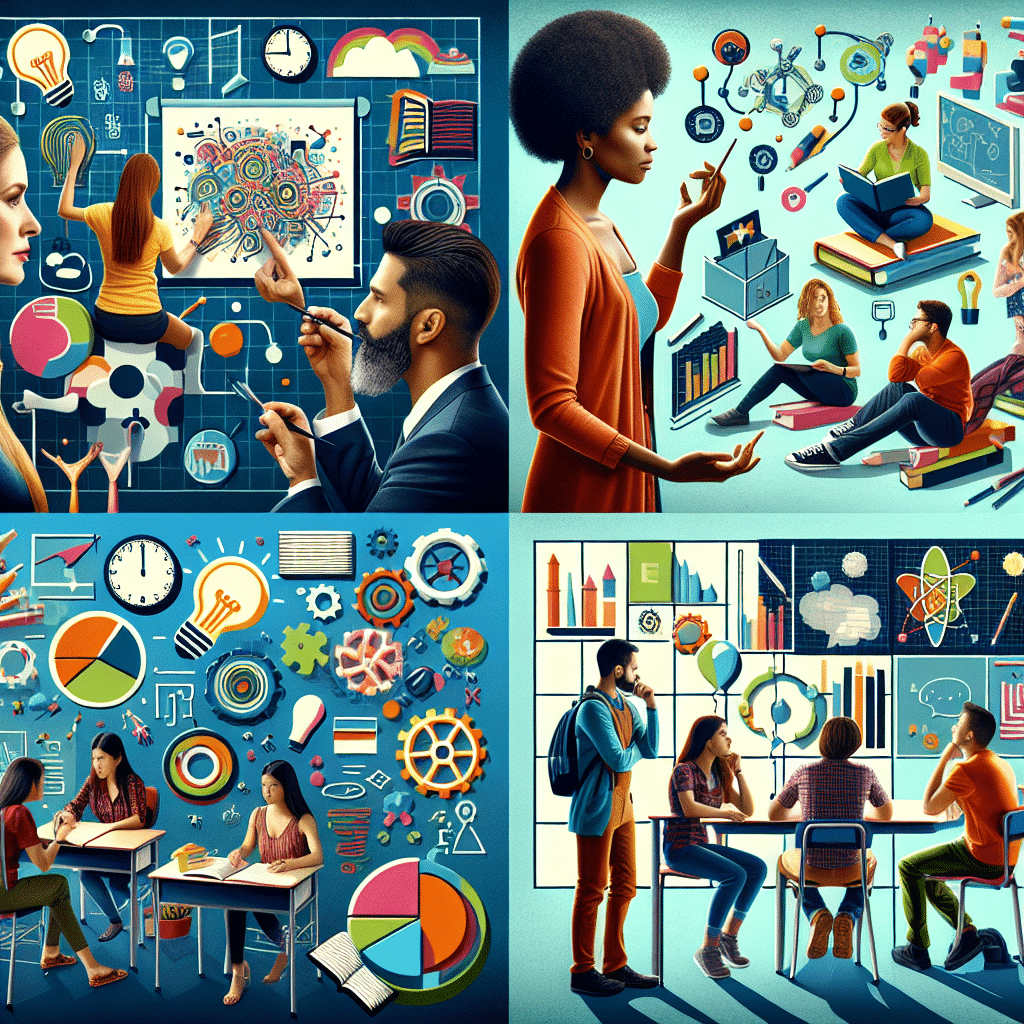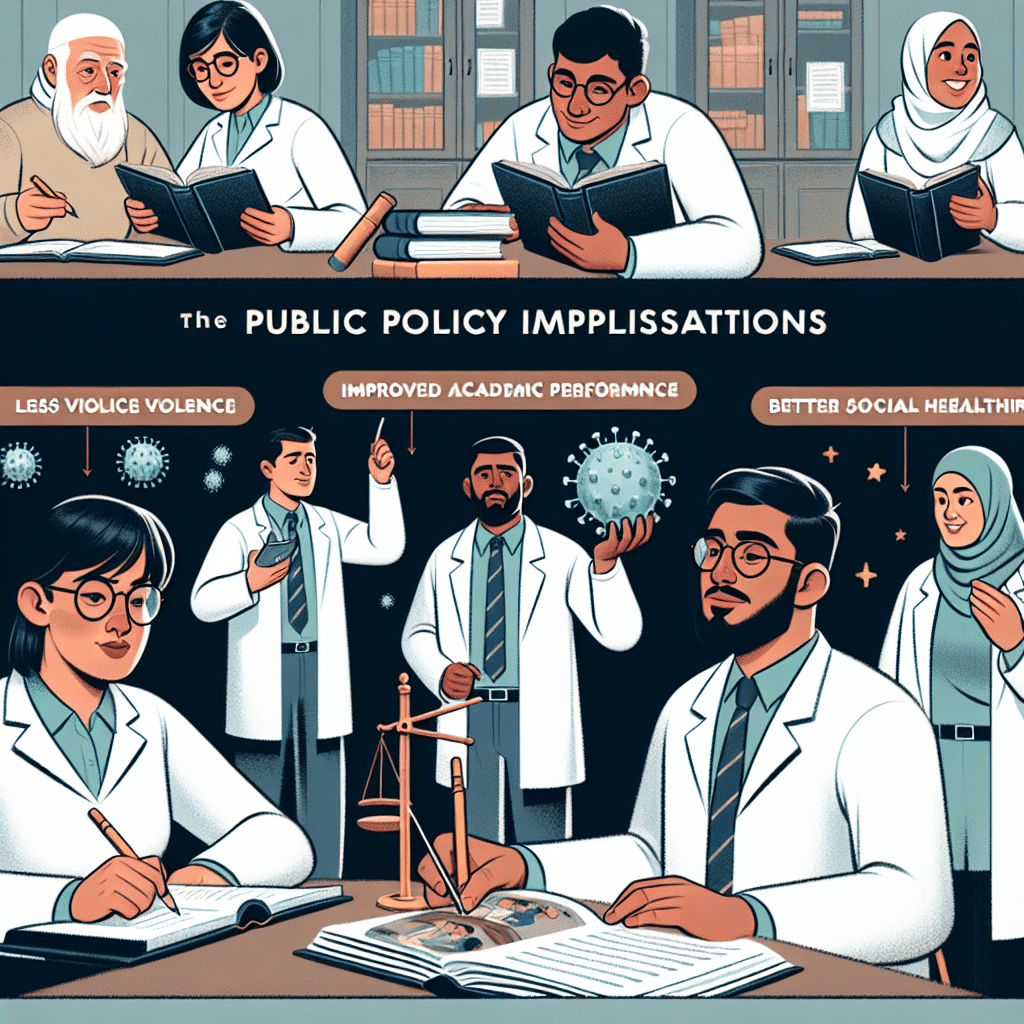
Understanding pedagogical approaches to creativity is essential for educators looking to nurture and develop their students’ creative potential. Pedagogy refers to the theory and practice of education, including the methods and strategies used to facilitate learning. Creativity is a vital skill in today’s rapidly changing world, and integrating it into education can help students think critically, solve problems, and innovate. There are various pedagogical approaches that educators can adopt to cultivate creativity in the classroom.
Implementing creative teaching strategies
Implementing creative teaching strategies is essential in fostering creativity in students and enhancing their learning experiences. By incorporating innovative approaches to teaching, educators can inspire students to think critically, solve problems creatively, and express themselves authentically. Here are some effective strategies for implementing creativity in the classroom:
Incorporating project-based learning
Project-based learning is a pedagogical approach that emphasizes hands-on, experiential learning through the completion of real-world projects. By engaging students in projects that require collaboration, critical thinking, and creativity, educators can encourage them to apply their knowledge in meaningful ways and develop important skills for the future. Project-based learning allows students to explore their interests, work on interdisciplinary tasks, and showcase their creativity through creative projects.
Fostering a growth mindset
Fostering a growth mindset in students is crucial for promoting creativity in the classroom. By encouraging students to embrace challenges, learn from failures, and persist in their efforts, educators can help them develop a positive attitude towards learning and problem-solving. A growth mindset empowers students to take risks, explore new possibilities, and push beyond their comfort zones to discover their creative potential.
Using collaborative learning techniques
Collaborative learning techniques involve group work, peer-to-peer interactions, and cooperative activities that encourage students to learn from each other and work together towards common goals. By fostering a collaborative learning environment, educators can promote creativity through shared ideas, diverse perspectives, and collective problem-solving. Collaborative learning enables students to engage in meaningful discussions, exchange feedback, and support each other’s creative endeavors, leading to enhanced learning outcomes and a sense of community in the classroom.
Cultivating a Creative Classroom Environment
Encouraging Experimentation and Risk-Taking
One key aspect of fostering creativity in the classroom is to create an environment where students feel comfortable experimenting and taking risks. Encourage students to think outside the box and try new approaches to problem-solving. Emphasize that making mistakes is a natural part of the learning process and encourage students to learn from their failures. By creating a safe space for students to take risks, you are helping them develop the confidence to be more creative in their thinking and approach to learning.
Providing Opportunities for Self-Expression
Another important aspect of cultivating a creative classroom environment is to provide opportunities for students to express themselves. Allow students to choose topics that interest them or give them the freedom to explore different mediums for assignments. Encourage students to share their unique perspectives and ideas with the class, fostering a sense of ownership and pride in their work. By providing opportunities for self-expression, you are empowering students to unleash their creativity and develop their own voice.
Promoting Open Communication and Idea-Sharing
Creating a culture of open communication and idea-sharing is essential for fostering creativity in the classroom. Encourage students to collaborate and engage in discussions about their work, providing feedback and insights to one another. Create opportunities for students to brainstorm ideas together and build upon each other’s creativity. By promoting a collaborative and inclusive environment, you are fostering a sense of community and teamwork that can inspire new and innovative ideas to flourish.

Assessing creativity in students
Assessing creativity in students is a critical component of promoting and nurturing their creative potential. By developing effective strategies for assessing creativity, educators can better understand the strengths and areas for growth in their students’ creative abilities.
Developing rubrics for assessing creative projects
One way to assess creativity in students is to develop rubrics specifically designed to evaluate creative projects. These rubrics should include criteria that focus on originality, innovation, problem-solving skills, and the ability to think outside the box. By providing clear guidelines for assessing creativity, educators can offer valuable feedback to students and help them improve their creative skills.
Providing constructive feedback
Constructive feedback plays a crucial role in assessing creativity in students. Educators should offer specific, actionable feedback that highlights both the strengths and areas for improvement in students’ creative work. By providing constructive feedback, educators can help students understand how to further develop their creative abilities and continue to grow as creative thinkers.
Recognizing and celebrating creativity in diverse forms
It’s essential for educators to recognize and celebrate creativity in diverse forms. Creativity can manifest in various ways, including art, music, writing, problem-solving, and innovative thinking. By acknowledging and valuing the different ways in which students express their creativity, educators can foster a supportive and inclusive environment that encourages all students to explore and develop their creative talents.
Overall, assessing creativity in students requires a thoughtful and comprehensive approach that takes into account the unique ways in which individuals express their creativity. By developing effective assessment strategies, providing constructive feedback, and celebrating creativity in diverse forms, educators can play a crucial role in nurturing the creative potential of their students.
Professional development for fostering creativity
Continuous learning is essential for educators to stay updated with the latest pedagogical approaches to creativity. Professional development opportunities offer teachers the chance to enhance their skills and discover new ways to foster creativity in the classroom.
Collaborating with other teachers and experts
Collaborating with colleagues and experts in the field can provide valuable insights and fresh perspectives on how to integrate creativity into teaching practices. Teachers can participate in workshops, conferences, and online forums to share ideas and learn from others who specialize in creative pedagogy.
Integrating technology to enhance creative learning opportunities
Technology can be a powerful tool for fostering creativity in the classroom. Educators can explore innovative software and digital platforms that encourage students to express their creativity in new ways. By integrating technology into lessons, teachers can create engaging learning experiences that inspire imagination and innovation.

Summary
Incorporating pedagogical approaches to creativity in education is crucial for developing students’ innovative thinking skills. By implementing creative teaching strategies such as project-based learning and fostering a growth mindset, educators can empower students to think outside the box.
Cultivating a creative classroom environment through encouraging experimentation and providing opportunities for self-expression can enhance students’ ability to generate original ideas and solutions. Assessing creativity in students using rubrics and constructive feedback helps recognize and celebrate diverse forms of creativity.
Continued professional development for educators, collaboration with peers, and leveraging technology can further support the cultivation of creativity in educational settings, ultimately preparing students for success in an evolving and dynamic world.






